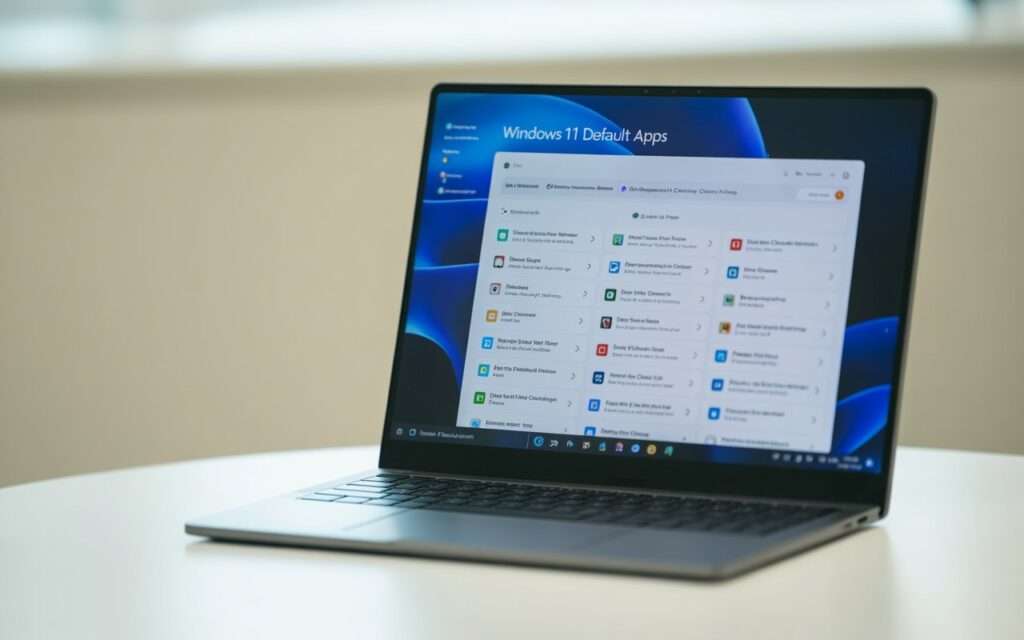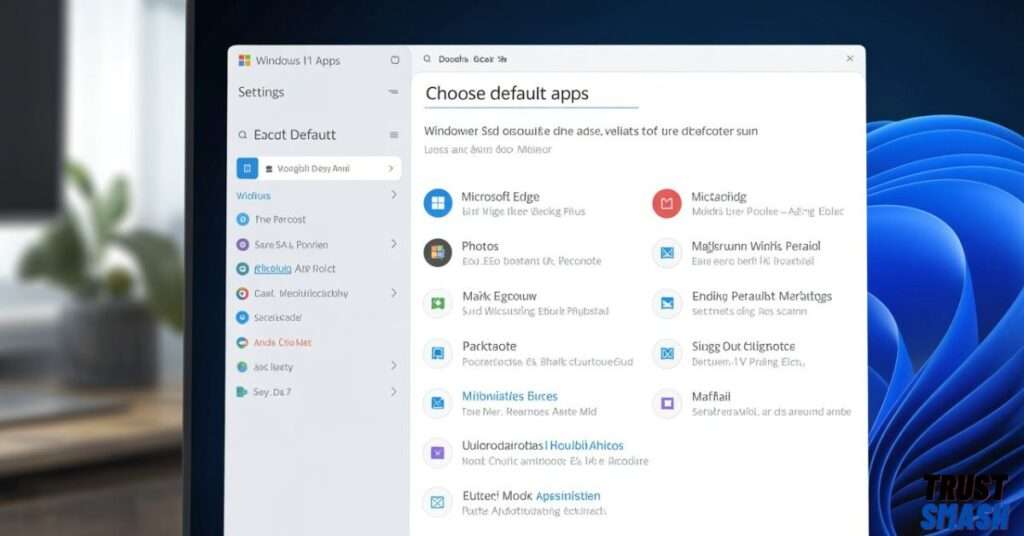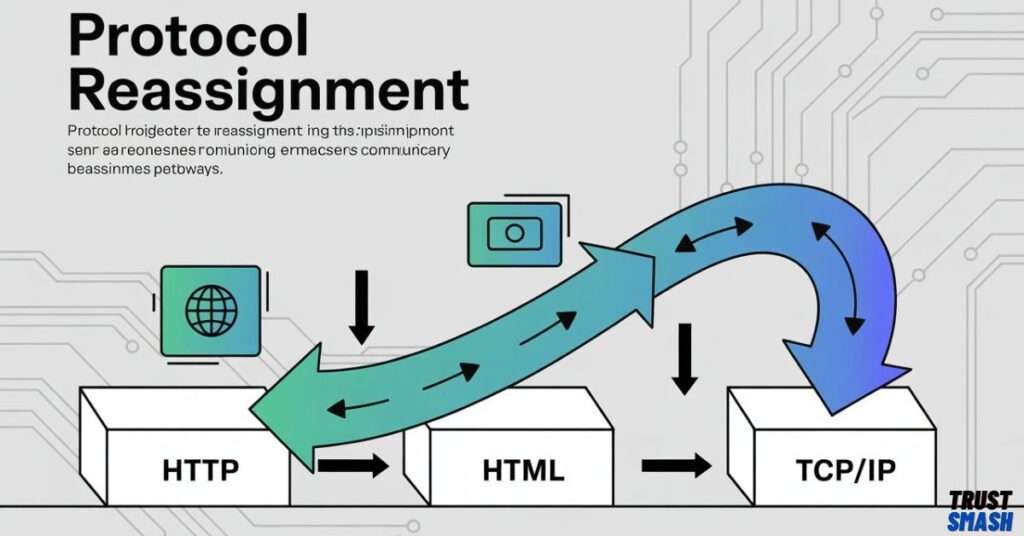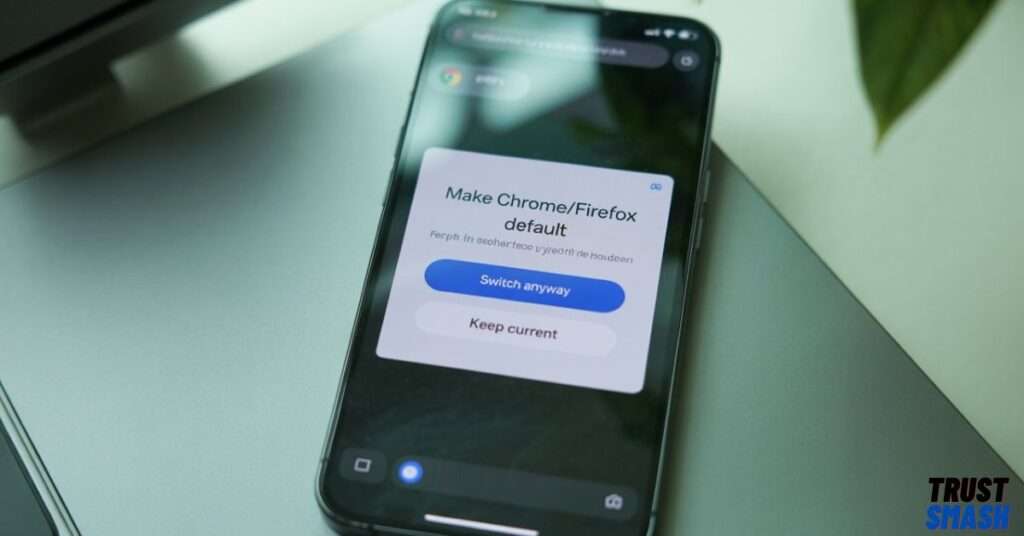
Changing your default browser in Windows 11 isn’t as straightforward as it once was. Microsoft has made it slightly more complex, pushing users to stick with Microsoft Edge. However, if you prefer Chrome or Firefox, you can still switch with the right steps. This guide on how to change default browser on Windows 11 helps you understand the full process. You’ll learn to navigate the Windows browser settings path, overcome the Microsoft Edge blocking change, and fix issues where the browser change not saving. Whether you want to make Chrome your primary browser or stop Edge from coming back, this browser setup guide covers everything in simple, easy-to-follow steps.
Why Windows 11 Keeps Reverting to Microsoft Edge
Windows 11 often resets your default browser to Microsoft Edge, even after setting another one. This happens because of how Microsoft controls the Windows browser configuration. System updates or new apps can trigger this change without your permission.
Another reason is the strong system-level integration of Microsoft Edge. Features like News & Interests, widgets, and some file types are linked directly to Edge. These links override your browser preferences Windows, causing frustration. You might feel like Microsoft Edge blocking change is intentional — and in many ways, it is.
How Browsers Are Set by Default in Windows 11
The process of setting a new browser in Windows 11 is different from Windows 10. In Windows 10, one click could change your browser across all protocols. But now, you need to manually select the new browser for each file type and link type. That’s why understanding the Windows browser settings path is important.
To access default apps settings, go to Settings > Apps > Default Apps. From there, you have to change the default for multiple protocols like HTTP, HTTPS, .HTM, and .HTML. This new system adds extra steps to make it harder to switch from Edge.
Common Issues When Changing Default Browser
Many users face the issue where the browser change not saving after setting Chrome or Firefox as default. Sometimes, the “Set default” button doesn’t appear. In other cases, settings revert after a restart. This is often due to system permissions or lack of administrator rights.
Software conflicts, especially with security apps or parental control tools, can also block browser changes. These apps can reset user preferences browser automatically. Knowing how to handle these problems helps you fix browser default reset efficiently.
Pre-requisites Before You Change the Browser
Before changing the browser, make sure you’ve installed your preferred browser. You can’t change to Chrome or Firefox unless it’s installed and recognized by Windows. Also, log in using an administrator account for full access to system changes.
Make sure your Windows 11 is fully updated. Some older builds block the change. If you’re working on a shared or work PC, check for any group policies that stop changes to browser preferences Windows. These steps are key before starting the manual browser setting process.
How to Find Default Apps Settings

To access default apps settings, click on the Start Menu and type “Default apps.” Select the system settings panel that appears. This takes you to a list of apps where you can choose your preferred defaults.
Search for your browser, such as Chrome or Firefox, then click it. You’ll see a list of file types and protocols. You need to change each to your preferred browser manually. This is a crucial part of the Windows browser configuration process.
How to Change Default Browser on Windows 11

Changing the default browser means setting your browser for every web-related file type. Open Settings > Apps > Default apps, then scroll or search for your new browser like Chrome or Firefox.
After opening the browser option, click on each protocol (HTTP, HTTPS, .HTML, .HTM) and choose your preferred browser. Once done, your system will use it as the new default. This step-by-step browser setup guide will help you avoid errors.
Setting Chrome or Firefox as Default in 1 Click

Some browsers, like Chrome and Firefox, offer a quicker way. When you first open them, they show a message saying “Make this my default browser.” Clicking it opens the browser settings Windows 11 panel and sets it as default.
However, this method doesn’t always change every file type. So even if it seems like the change worked, you should still check the default apps Windows tutorial to confirm all protocols are correctly set.
Verifying Your Browser Is Now Default
To verify default browser setting, go back to Settings > Default apps, and search for the browser. Make sure it’s assigned to all major web types like HTTP and .HTML.
You can also test by clicking a web link from an app like Word or Outlook. If your new browser opens, the change worked. If Edge still opens, you’ll need to revisit your manual browser setting.
Reverting Back to Microsoft Edge if Needed
Sometimes, you may want to revert to Edge if needed. This could be for battery life, compatibility, or business tools that work best with Edge. The process is the same. Open Default apps, find Microsoft Edge, and reassign the protocols.
Keep in mind that Edge updates may bring new features or better integration. Still, Chrome vs Edge default performance comparisons show that it depends on what matters more — speed, memory use, or features.
Fix: Default Browser Keeps Resetting After Restart
If your browser resets back to Edge after a restart, this could be caused by system policies or bugs. You can try using set browser via registry (advanced), but it’s risky and meant for experienced users.
Another trick is to disable any auto-repair tools or third-party apps that control system defaults. Run gpedit.msc to check if there’s any group policy applied. This is often necessary for an Edge auto-revert fix that sticks.
Tips to Improve Performance with New Default Browser
Once your new browser is active, disable background apps that slow down Windows. In Chrome or Firefox, turn off unused extensions and reduce animations.
You can also make the browser open faster by setting your startup page to blank and enabling performance modes. These small tricks can make your Windows browser configuration feel much smoother after the switch.
FAQs About Changing Browsers in Windows 11
How do I make Chrome my default browser in Windows 11?
To set Chrome as default browser, first install Chrome from the official Google Chrome website. Open Chrome, and it will ask if you want to make it your default browser. Click “Yes.” If it doesn’t ask, go to Settings > Apps > Default Apps, search for “Google Chrome,” and then change each protocol (like HTTP, HTTPS, .HTML) to Chrome. This ensures all web links and files open in Chrome by default. Always verify default browser setting by testing a web link.
How to change default open with Windows 11?
To change the default app for opening specific files in Windows 11, right-click the file you want to open, choose “Open with,” then click “Choose another app.” Select your preferred app and tick the box that says “Always use this app.” You can also go to Settings > Apps > Default Apps, scroll down and choose the file type (like .pdf, .jpg, or .docx), then assign the app you want. This is part of the browser preferences Windows and overall Windows 11 app defaults system.
How do I disable Microsoft Edge as the default browser in Windows 11?
You can’t uninstall Microsoft Edge completely because it’s built into the system. However, you can change Microsoft Edge default settings so it no longer opens links or files. Go to Settings > Default Apps, search “Microsoft Edge,” and remove its association with HTTP, HTTPS, .HTM, and .HTML. Then set your preferred browser for these protocols. This helps bypass the Microsoft Edge blocking change problem and lets you use Chrome or Firefox without interruptions.
How do I change my default browser?
To change your default browser, open Settings, go to Apps > Default Apps, and search for your new browser (Chrome, Firefox, etc.). Click it, and one by one, assign it to open all web-related file types like HTTP, HTTPS, .HTML, and .HTM. This is the correct manual browser setting process for Windows browser configuration. After finishing, test a link to make sure the new browser opens it.